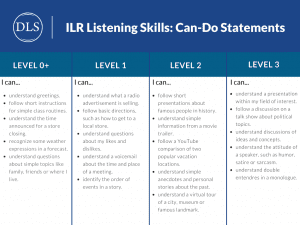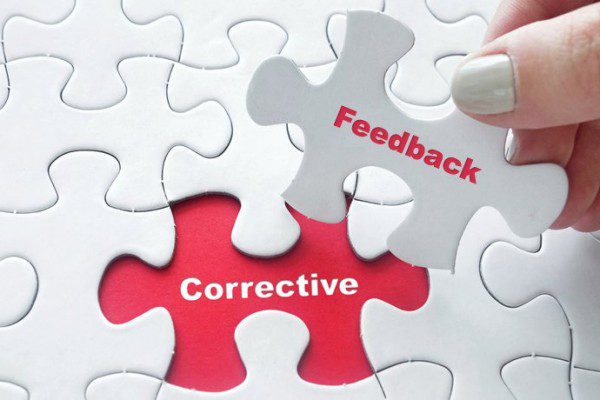Foreign language proficiency at DLS is measured on the ILR scale. ILR stands for Interagency Language Roundtable, and it measures language proficiency by the capabilities of the student in the target language. For example, instead of measuring a student’s score on a multiple-choice exam, a student’s ILR level would be determined by what they can do in the target language. The scale runs from 0 to 5, with zero representing a true beginner with no knowledge of the target language and 5 representing the language skills of a native speaker.
Imagine the ILR scale like a cone filling up from the bottom. As a student acquires new skills, the cone fills up to one level and then the next, with each new level demonstrating a wider array of functional capabilities than the last. Note that there are “plus” levels that exist between each ILR level, e.g. level 0+, 1+, 2+, etc. These levels indicate a student who can perform some or most of the tasks required for the next level, but not consistently.
Outline of ILR Proficiency Levels
Levels 4 and 5: Full Professional Proficiency and Native Proficiency
Can handle any situation or context as well as informal interpreting of the target language with rare and minor errors. A Level 4 speaker can use the language fluently and accurately as normally pertinent to professional needs.
Level 3/3+: Professional Proficiency
Able to participate in most conversations on social, personal, or professional topics. May still speak with an accent, but only makes occasional errors that seldom interfere with meaning.
Level 2/2+: Limited Working Proficiency
Can confidently handle basic social situations, like introductions and casual conversation, and can get the gist of most conversations on non-technical subjects.
Level 1/1+: Elementary Proficiency
Can fulfill most basic needs, conduct themselves in a polite manner, and understand basic speech.
Level 0+: Memorized Proficiency
Proficiency limited to memorized, isolated words and phrases.
Level 0: No Proficiency
ILR Skills
The ILR scale is typically looking at four key language skills: speaking, listening, reading, and writing. The time dedicated to each skill depends on the needs of the student and the work he or she will do with the target language. For example, a student who will work with locals abroad may have no need for writing skills. With that in mind, this student’s goal may be to achieve an ILR score of 2/2/2. That would mean scoring 2 in speaking, 2 in listening, and 2 in reading.






Additional Resources
- Read more about the ILR scale at the Interagency Language Roundtable official website, which includes FAQs and the history of the ILR scale’s establishment.
- Review the Interagency Language Roundtable’s self-assessment table for ILR speaking skills here.
- The CIA website offers a breakdown of the ILR levels through a series of short YouTube videos.
Stay tuned for Part Two, where we’ll cover more on language and cultural training on the ILR scale. Specifically, in our next post, we’ll discuss task-based instruction!




